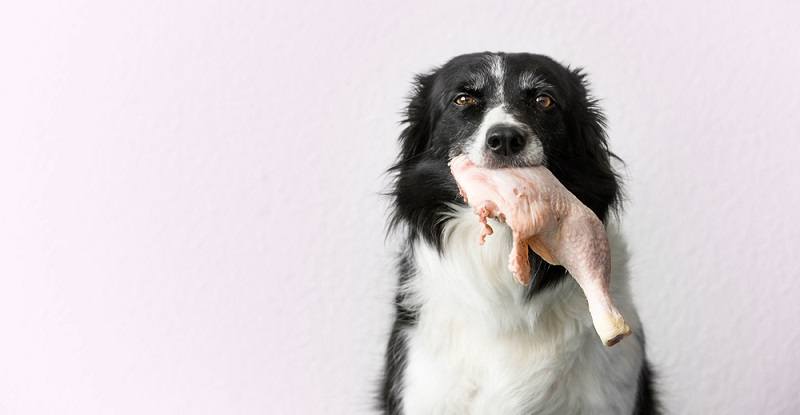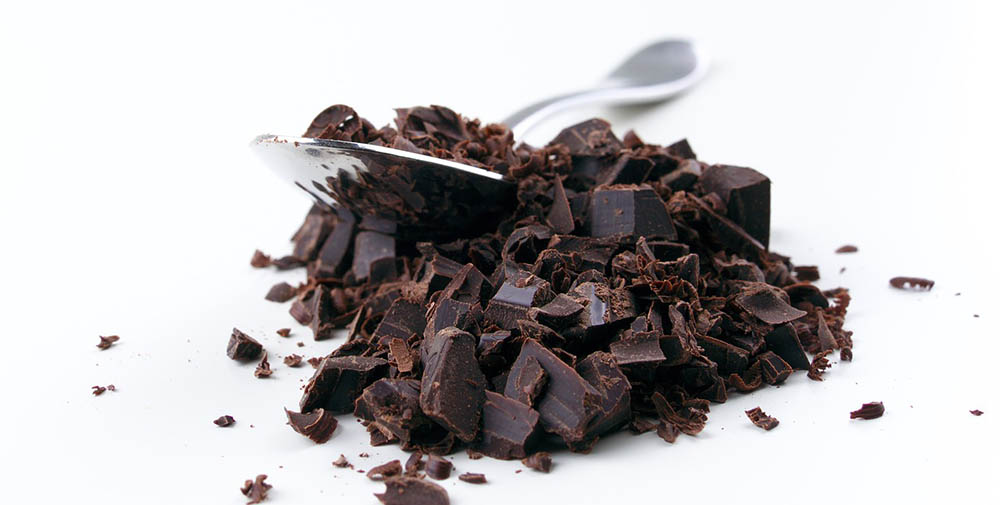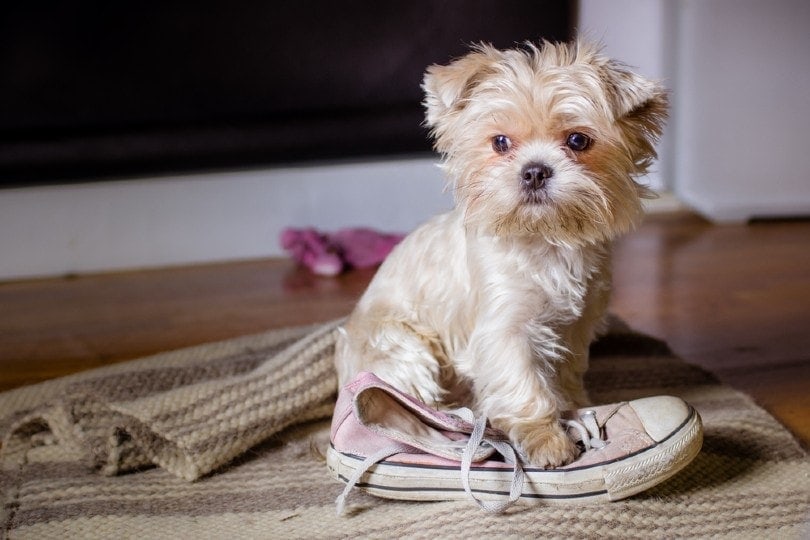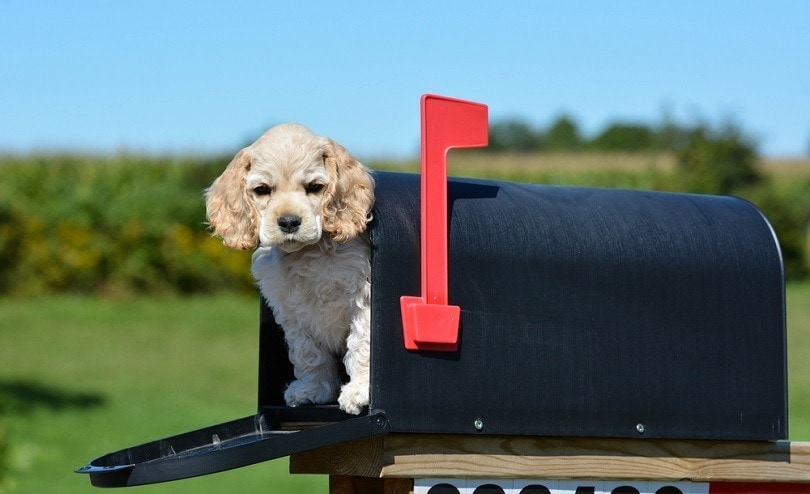Height:
8 – 11 inches
Weight:
Up to 6½ pounds
Lifespan:
12 – 14 years
Colors:
Black, blue, brown, tan, red, red sable
Suitable for:
Families with older children, those seeking a companion dog, apartment living
Temperament:
Demanding, feisty, sweet, fun, affectionate with his family
The Russian Toy Dog, also known as the Russkiy Toys, is a rare but lovely little pooch whose popularity is increasing in the United States. He is teeny tiny but full of big dog character. And his quirky and unique appearance is making small dog lovers across the world swoon.
He doesn’t just make a wonderful companion dog that you can slip into your purse, but he also makes a fantastically fun dog for the whole family’s entertainment. He is sweet, affectionate, and demands your full attention. It’s safe to say that there is never a dull moment with the Russian Toy Dog around.
Despite being small, the Russian Toy comes with a wide variety of needs, all of which you will need to provide him with. Otherwise, you’ll soon find an unhappy pup on your hands. This is why this Russian Toy breed guide is essential because here, we’ll cover everything you need to know.
So, let’s jump straight into the small world of Russian Toys.
 Russian Toy Dog Puppies – Before You Buy…
Russian Toy Dog Puppies – Before You Buy…
The Russian Toy Dog is a typical toy pooch, meaning that he has many attractive traits and some that not all dog lovers are a fan of. Here we will run you through the ones that could determine whether he is the right dog breed for you. If you can get through this section, you’re sure to fall in love with him.
He is full of lively character, and although he loves to lay on his master’s lap, he cannot sit still for too long. So, if you are seeking a true lapdog, this pup is not the breed for you. Instead, you need to be relatively active and have the energy and time to play with him throughout the day.
He is demanding. He doesn’t like to be left alone for any period of time, so it is essential to crate train him. And he will also become jealous if you show anyone other than him attention. This behavior should not be tolerated. We will discuss both of these points in the training section.
As he is so small, he is not suited to families with young children. He is not that tolerant of overzealous hands. And young children often treat him like an actual toy, rather than a living animal, which can lead to accidents. We would suggest that this guy is only suited to families with older children.
Russian Toy Dogs have a surprisingly high prey drive. This comes from their English Toy Terrier ancestors, who were used as rat exterminators on farms. Although he can live with some other household pets (not all), he should be kept on a leash in public all the time. Not only will he run off, but he might just catch up with the neighborhood squirrel ending in a one-sided battle.
Although he is sweet with his family, he doesn’t extend this kindness to visitors and strangers. This means that not only do you have to thoroughly socialize him, you also need to expect that he isn’t the most friendly of pooches.
What’s the Price of Russian Toy Dog Puppies?
The price of a Russian Toy Dog from a reputable breeder starts from $1,000, but can reach $3,000 depending on the breeder you work with. Thankfully, by working with a reputable breeder, you are ensuring that the puppy you take home with you comes with the best health possible.
Although you might be able to secure a lower price elsewhere, there is a high chance that they are a backstreet breeder or part of a puppy mill. This means that they have no care for the puppies’ health, and only for the profit they can make. Usually, puppies from unreputable or unethical breeders come riddled with health concerns, which in turn increases your vet bill. So ultimately, the lower price is not worth it.
 3 Little-Known Facts About Russian Toy Dog
3 Little-Known Facts About Russian Toy Dog
1. The Russian Toy Dog is one of the smallest dogs in the world.
The Russian Toy Dog never weighs more than six and a half pounds. Some Russian Toy Dogs can weigh as little as three pounds. His tiny size comes with its positives and negatives. Many people describe the short-haired Russian Toy Dog as looking like a miniature deer.
2. The Russian Toy Dog is full of terrier personality.
Until 2006, the Russian Toy Dog was previously known as the Russian Toy Terrier. English Toy Terriers formed the basis of this breed. And despite now being smaller than his terrier ancestors, he still has the tenacious and fun character.
3. There are two types of Russian Toy Dogs.
The Russian Toy Dog can sport either the long-haired coat or the short-haired coat. His jacket has no bearing on his personality. The only aspect of his life that it affects is his grooming schedule. So, if you want to spend as little time as possible on his grooming needs, the short-haired Russian will be your better option. The long-haired Russian Toy was previously known as the Moscow Long Haired Toy Terrier, but they are now recognized as the same breed.
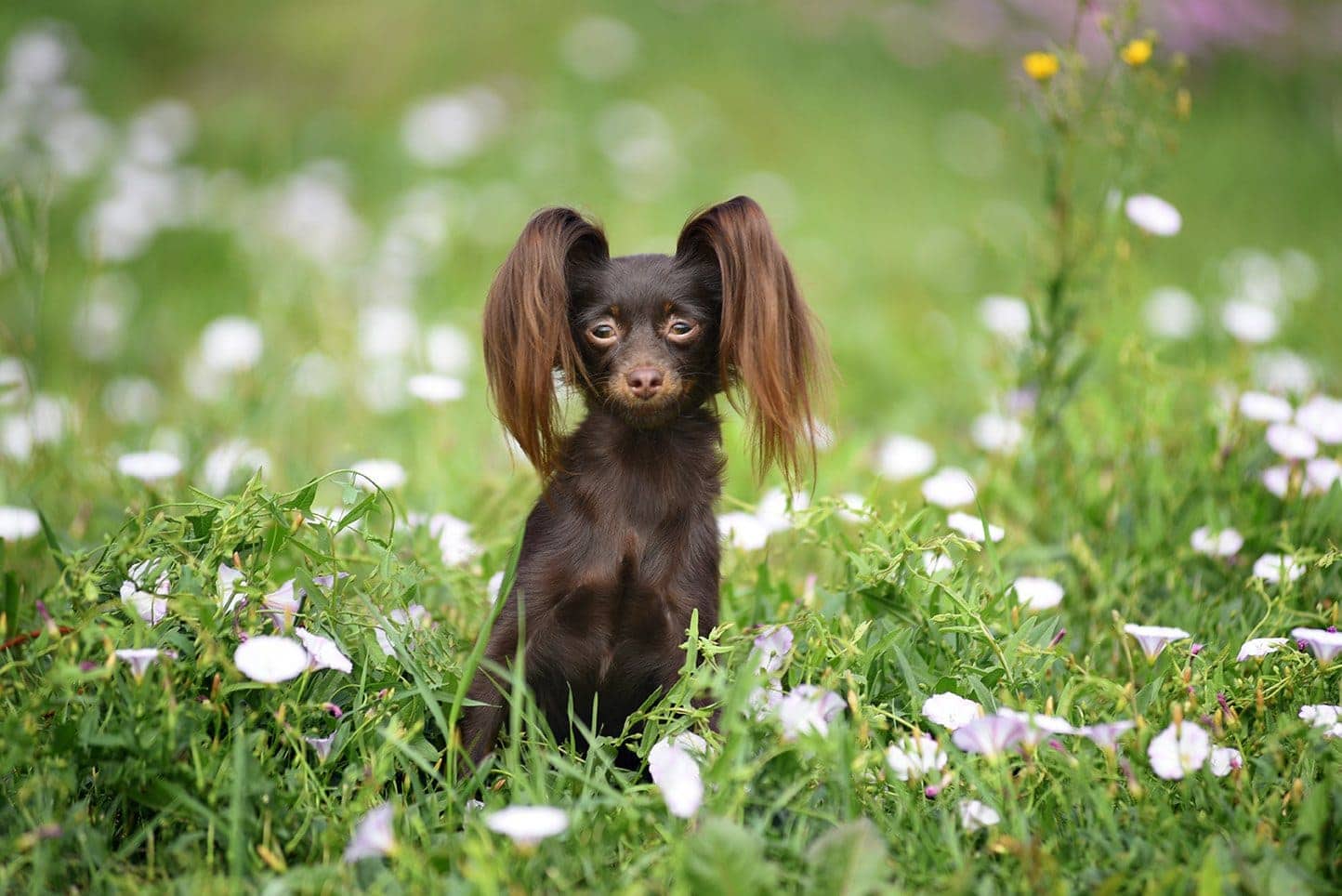
Temperament & Intelligence of the Russian Toy Dog
Now you know all of his ‘difficult’ traits (all dogs have them), it’s time to look at his fabulous ones, darling. This small pooch is bursting with love for his family. He craves his human’s company and loves to feel the comfort of their warmth. If you like to Netflix and chill in the evening, this guy is definitely up for it.
He is lots of fun and will entertain you and the whole family for a few hours each day. He likes to think of himself as the family comedian and feels great when he knows he has made you laugh. So, if you are looking for a small dog to brighten your days, look no further than the Russian Toy Dog.
The Russian Toy Dog’s suspicion of strangers means that he makes a fantastic watchdog. If you can hear him barking, you might want to check it out. This is great if you are forever missing the delivery guy, and you need a louder alarm.
The Russian Toy Dog is intelligent, and it’s great to keep his mind challenged with brain games and training sessions. But, you need to be prepared for the typical small dog stubborn streak. This means you might have a fully obedient pooch one day, and an obnoxious one the next. But, this is all a part of his charm, so enjoy the Russian ride!
Are These Dogs Good for Families?
Yes, the Russian Toy Dog makes a great family pet, but for the right family. As you can see from the ‘before you buy’ section above, there are many characteristics about him that don’t suit everyone. So, to ensure that he is the right dog for you and your family, you need to be able to tick all of his boxes.
Being super tiny, unlike many other canines, he is an ideal candidate for apartment living. Just be sure that your yard is secure because he’ll run after the local cats and other fluffy and wild rodents. He can fit through the smallest of gaps and can be a challenge to find again.
Does This Breed Get Along with Other Pets?
The Russian Toy Dog is likely to get along with other household dogs, just as long as he is socialized well as a pup. If he isn’t, like many other toy dogs, he can be rude towards other canines. He is also likely to get along with family cats too.
However, if you have other pets, such as rabbits, guinea pigs, or mice, he is unlikely to get along with them. If it resembles a rat, his natural ratting instinct will take over, and it won’t make for a harmonious household.
 Things to Know When Owning a Russian Toy Dog:
Things to Know When Owning a Russian Toy Dog:
There are a few more things that you need to know about the Russian Toy Dog and his day-to-day needs.
Food & Diet Requirements
The Russian Toy Dog is a teeny pup with an even smaller stomach. He will only eat a maximum of one cup of food a day. As he is small, you should spread his meals out more frequently compared to other dog breeds. Three meals a day is ideal for this pooch.
When looking for a kibble for him, bear in mind that he has a tiny mouth, which means that most kibbles are too big for him. For this reason, it is crucial to look for a kibble designed explicitly for toy or small breeds. Additionally, they come in smaller bags meaning that the food you buy him won’t spoil before he can finish it.
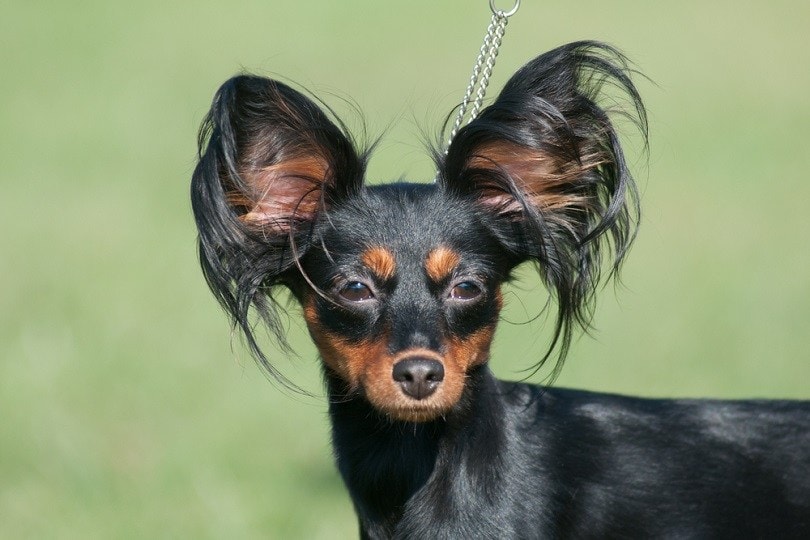
Exercise
The Russian Toy Dog is a small canine who only needs around 30 minutes of exercise every day. A couple of strolls around the block will suit him, mixed up with a few other activities within the week to keep his mind challenged.
If he is a well-socialized pup, he would also like a visit to the local doggy park. Just bear in mind his tiny frame and the chance that other bigger dogs could injure him. If you see a few smaller pups in the park, invite him in, and if they look too big for him, wait for another day.
He will also need regular playtime throughout the day at home on top of his daily exercise. This is purely to keep his brain stimulated and to prevent him from becoming bored and obnoxious. Keep a basket full of small dog toys handy so that he can keep himself entertained for those times that you cannot play with him while you take those business calls.
Training
The Russian Toy Dog is an intelligent canine who could be an obedient pooch if he wanted to be. But because of his stubborn streak, he doesn’t always want to be. The key to training stubborn dogs is to be persistent and consistent with his training and never give up. Otherwise, he’ll think that he has you wrapped around his paws.
As we mentioned earlier, because he is a little dog, he comes with potential behavioral problems. But this is only a problem because of how many small dog owners react to their small dogs. Essentially, what it comes down to is not allowing your Russian Toy Dog to get away with behaviors that you wouldn’t let a large dog get away with. This is called little dog syndrome.
Because he hates to be left alone, we would advise crate training your Russian Toy Dog. Not only does this give you peace of mind when you have to leave him home alone, but it also gives him somewhere to relax too.
Grooming ✂️
His grooming schedule is entirely dependant on whether he sports a short-hair or long-hair jacket. If he wears the shorter coat, he’ll only need brushing once a week to remove dead hair and dirt, and to keep him looking smart. If he has a long coat, he’ll need brushing two or three times a week with a slicker brush to prevent his locks from matting.
On top of his general canine grooming duties, his teeth need extra brushing because of how compact his mouth is. Brush his teeth several times a week with doggy toothpaste. If he is a long-haired pup, you’ll need to keep the hairs around his anus short to keep him clean. Look to bathe this guy once every month to keep him smelling fresh. Keep his nails trimmed, and his ears and eyes clean.
Health and Conditions
Just like any purebred dog, the Russian Toy Terrier has his share of health concerns to worry about. Thankfully, he is a healthy dog breed who suffers from fewer conditions than your average pup. His average lifespan is 12 to 14 years, but many Russian Toy Dogs live beyond this age. Here are the main concerns to learn about so that you can recognize the symptoms should they arise.
- Heart conditions
- Periodontal disease
- Patellar luxation

Male vs. Female
There is little difference between a male and a female Russian Toy Dog. And because this breed already weighs next to nothing, the average size difference between males and females isn’t easy to spot. The gender will be unlikely to have a bearing on your choice of Russian Toy Dog.
Instead, focus on his upbringing, training, and family environment to achieve a polite pooch who is a pleasure to be around.
 Final Thoughts
Final Thoughts
The Russian Toy Dog is a delightful purebred pup who enjoys the finer things in life. He also loves to get down and dirty with his family if it means that he can be the center of attention.
Ideally, he needs a family that can spend most of their time with him. Thankfully, because of his small size, he can fit in your purse, leaving no excuses to leave him alone for too long. He is also a delicate canine who needs to be home with older children.
This toy pup is rare in America, so for those owners looking for a small dog with a twist, this Russian pup gives you precisely that. He is full of love and adoration for his family, and if you can put up with his sassy ways, he is a delight to have in the family home.
Featured image credit: dien, Shutterstock

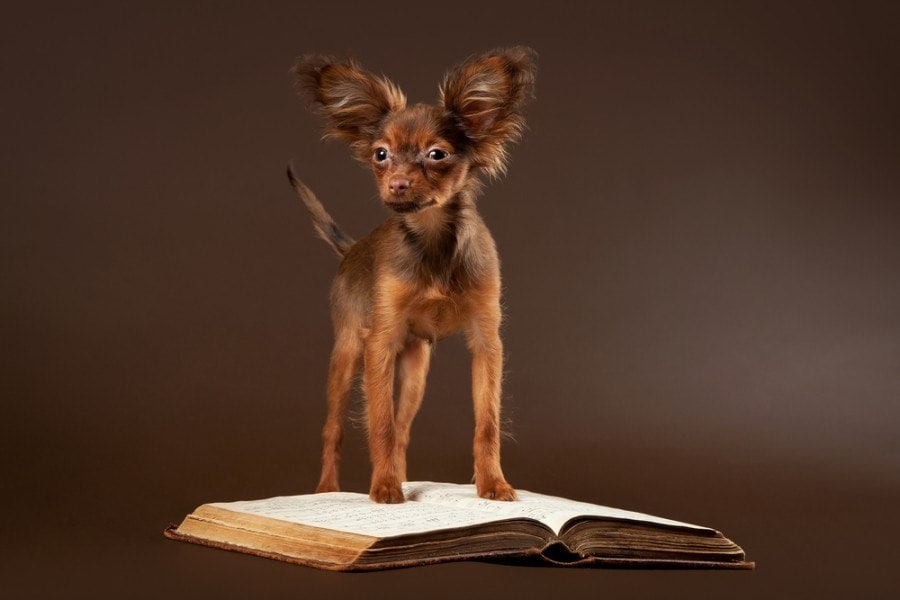
 Russian Toy Dog Puppies – Before You Buy…
Russian Toy Dog Puppies – Before You Buy… 3 Little-Known Facts About Russian Toy Dog
3 Little-Known Facts About Russian Toy Dog Things to Know When Owning a Russian Toy Dog:
Things to Know When Owning a Russian Toy Dog: Final Thoughts
Final Thoughts